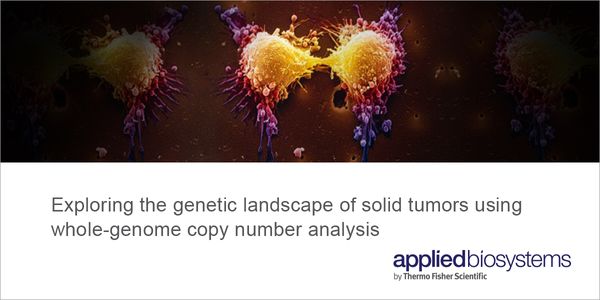Genetics
Genetics: the study of genes, genetic variation, and heredity in living organisms. It is generally considered a field of biology, but intersects frequently with many other life sciences and is strongly linked with the study of information systems. The father of genetics is Gregor Mendel, a late 19th-century scientist and Augustinian friar. Mendel studied "trait inheritance", patterns in the way traits are handed down from parents to offspring. He observed that organisms (pea plants) inherit traits by way of discrete "units of inheritance". This term, still used today, is a somewhat ambiguous definition of what is referred to as a gene.
-
The NIH put Precision Medicine on the map as a revolutionary way to manage disease, delivering the right treatment, to the right patient, at the right time. But what does Precision Medicine r...
Most cancer therapies have highly variable activity from one patient to another, with only a fraction of patients’ cancers responding to a given treatment. In many types of cancer, comb...
It has been noted by many in the community that for Precision Medicine to become a transformative reality, the underlying DNA and RNA sequence data have to become more precise. In my talk, I...
Virtually all tumors are genetically heterogeneous, containing subclonal populations of cells that are defined by distinct mutations. Subclones can have unique phenotypes that influence disea...
Inherited disorders affect millions of people globally. These diseases significantly impact lives of patients and their families, and in addition, also results in substantial socio-economic i...
Speaker:
Raed Samara, PhD
, Rupert Yip, PhD
JUN 19, 2019 | 10:00 AM
DATE: June 19, 2019TIME: 10:00am PDT, 1:00pm EDT As we develop new methods to create more biologically relevant models for research in understanding disease etiology and in...
JUN 19, 2019 | 8:00 AM
DATE: June 19, 2019TIME: 8:00am PDT, 11:00am EDT Approximately 80% of all cancers are known to be affected by both somatic mutations and copy number changes. Furthermore, r...
Speaker:
Ravindra Kolhe, MD, PhD
, Joanna Przybyl, PhD
Sponsored By: Thermo Fisher Scientific - Applied Biosystems
JUN 05, 2019 | 5:00 PM
DATE: June 5, 2019TIME: 8:00am PDT, 11:00am EDT, 5:00pm CEST Eukaryotic cell cultures respond to the most subtle influence. Apart from the risk of contamination, minimal chan...
MAY 21, 2019 | 7:00 AM
DATE: May 21, 2019TIMEL 7:00am PT, 10:00am ET Human T cells are central effectors of immunity and cancer immunotherapy. CRISPR-based functional studies in T cells could prioriti...
MAY 16, 2019 | 4:00 PM
DATE: May 16, 2019TIME: 7:00am PDT, 10:00am EDT, 4:00pm CEST The emergence of NGS is revolutionizing the microbiological sciences and transforming medicine. Deep sequencing has...
In 2014, the Undiagnosed Diseases Network (UDN), which is funded by the NIH, was established as a network of seven clinical sites, two sequencing cores, and a coordinating center. Later, a ce...
Screening to identify all known viruses and other pathogenic microorganisms including bacteria, fungus and parasites in human tumor tissues will provide a more comprehensive understanding of...
Speaker:
Erle Robertson, PhD
Real-time PCR, or quantitative qPCR, is a commonly used molecular biology lab technique to determine the actual amount of PCR product at a given cycle. For quantitative reverse transcription...
Speaker:
Gillian Browne, PhD
























